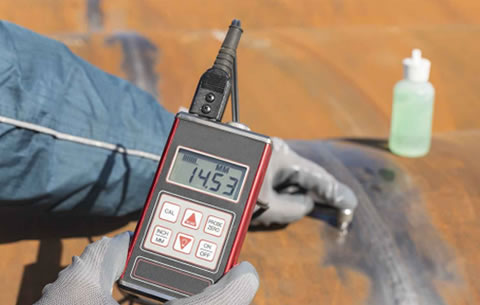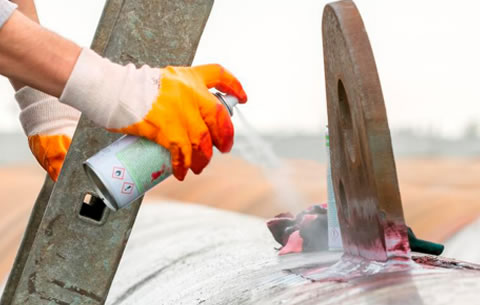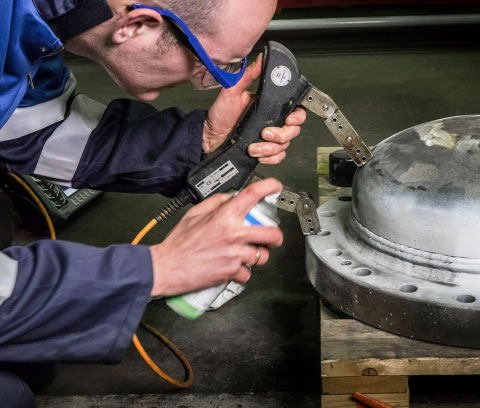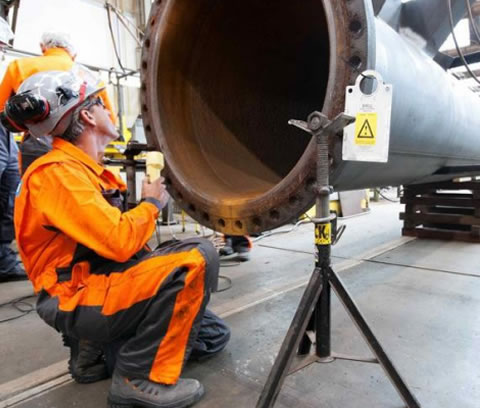

Services
We help you ensure the reliability and safety of your products, equipment or plant assets with our word-class service in non-destructive testing (NDT), materiales testing and welding quality. We understand the processes involved throughout the entire product cycle-from design and manufacture to operation and maintenance and the frequent need for rapid turnaround times.

Ultrasonic statics
Ultrasonic Testing inspection is a method commonly used for flaw detection/evaluation, dimensional measurements and material characterization.
In most of its applications, this technique uses very shot ultrasonic pulse-waves with center frequencies ranging from 0.1-15 MHz are transmitted into materials to detect internal flaws or to characterize materials.
 Liquid penetrant inspections
Liquid penetrant inspections
Liquid penetrant inspection (LPI) or penetrant testing (PT), is a widely applied and low-cost inspection method used to check surface-breaking defects in all non-porous materials (metals, plastics, or ceramics). The penetrant may be applied to all non-ferrous materials and ferrous materials. PT is used to detect casting, forging and welding surface defects such as hairline cracks, surface porosity, leaks in new products, and fatigue cracks on in-service components.
Liquid penetrant inspection is a method that is used to reveal surface breaking flaws by bleed-out of a colored or fluorescent dye from the flaw. The technique is based on the ability of a liquid to be drawn into a «clean» surface breaking flaw by capillary action. Inspection is performed under ultraviolet or white light, depending on the type of dye used – fluorescent or nonfluorescent (visible).
 Magnetic particle testing
Magnetic particle testing
Magnetic Particle Testing (MPT), also referred to as Magnetic Particle Inspection, is a nondestructive examination (NDE) technique used to detect surface and slightly subsurface flaws in most ferromagnetic materials such as iron, nickel, and cobalt, and some of their alloys. Since this method does not require as much surface preparation, performing MPT is sometimes a more practical approach. Another variation to this method is wet-fluorescent magnetic particle testing (WFMT) which is often preferred when trying to identify very small discontinuities..
To identify a leak, ferrous particles, either dry or in a wet suspension, are applied to a part. These are attracted to an area of flux leakage and form what is known as an indication, which is evaluated to determine its nature, cause, and course of action, if any
 Visual testing
Visual testing
Visual testing is one of the oldest forms of non-destructive examinations available. This technique is
very important for detecting any surface flaws on equipment or piping systems. It is also used to
determine if a more extensive inspection, involving other NDE methods, might be necessary as a
result of the visual fi
Testimonials
What Clients Are Saying

Valeria Valencia
Project Manager

Cristhian Valverde
CEO

Daniel Garcia
Manager

